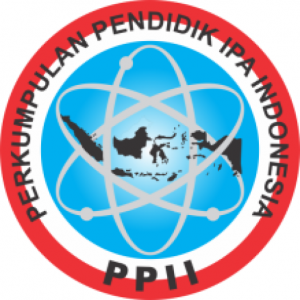Identification of Cashew Pests in Jatisari Village, Jatisrono District, Wonogiri District
Authors
Dhea Cindy Octaviana , Tri WihartiDOI:
10.29303/jbt.v25i1.8599Published:
2025-02-21Issue:
Vol. 25 No. 1 (2025): Januari - MaretKeywords:
Anacardium occidentale, cashew pests, environmental factors, pest identification.Articles
Downloads
How to Cite
Downloads
Metrics
Abstract
Cashew (Anacardium occidentale) is one of the export commodities with high economic value. However, cashew production in Indonesia faces serious challenges due to pest attacks that can reduce yields. This study aims to identify the types of pests that attack cashew trees in Jatisari Village, Jatisrono District, Wonogiri Regency, and to analyze the relationship between pest occurrence and environmental factors such as temperature, humidity, and rainfall. The method used in this study was direct observation in four hamlets with data collection through visual documentation and recording symptoms of pest attacks on plants. The results showed that there were 11 main pest species that attacked cashew, including Bemisia tabaci, Hyphantria cunea, Sanurus indecora Jacobi, Toxoptera citricidus Kirk., Helopeltis sp., Setothosea asigna, Orgyia definita, Euthalia aconthea, and Melanitis leda. These pests cause various forms of damage to plants, such as defoliation, flower and fruit drop, and stunted growth. Environmental factors such as temperature and humidity have been shown to have a significant impact on the level of pest infestation. This study provides insight for farmers in more effective and sustainable pest control efforts.
References
Al Ghazi, M. I., Dhiya'ulhaq, N. U., Arfentri, C. W., Azizah, N. R. N., & Ali, R. N. (2024). Preferensi Habitat Laba-Laba Di Kawasan Karst Suaka Margasatwa Paliyan. Biology Natural Resources Journal, 3(1), 20-27. https://doi.org/10.55719/binar.v3i2.1360
Anggraeni, I., Lelana, N. E., & Ismanto, A. (2019). Serangga hama terkini yang menyerang tanaman sengon (Falcataria moluccana (Miq.) Berneby & J.W Grimes) dan jabon (Neolamarckia cadamba (Roxb.) Bosser). Jurnal Sains Natural, 9(2), 47. https://doi.org/10.31938/jsn.v9i2.223
Arfianto, F. (2016). Pengendalian Hama Kutu Daun Coklat pada Tanaman Cabe mengggunakan Pestisida Organik Ekstrak Serai Wangi: The Control of Brown Leaves Insects’ Pests (Toxoprera citricidus Kirk) on Chili (Capsicum annum L.) by Using Organic Pesticide Citronella Extract (Cymbopogon nardus L.). Anterior Jurnal, 16(1), 57-66. https://doi.org/10.33084/anterior.v16i1.78
Bais, R. K. S. (2016). On the occurrence of Common Baron (Lepidoptera: Nymphalidae: Limenitidinae: Euthalia aconthea Cramer, 1777) in the Delhi area and analysis of abiotic factors affecting its distribution in India. Journal of Threatened Taxa, 8(12), 9418-9433. https://doi.org/10.11609/jott.3112.8.12.9418-9433
Boopathi T, Singh SB, Manju T, Dutta SK, Saha S, Singh AR, et al. Effect of weather factors on the population of Chaetocnema spp., Monolepta signata Oliver and Aulacophora foveicollis (Lucas) on paddy under rain fed low land conditions in Mizoram, India. Journal of Agrometeorology. 2017; 19(2):145-148. https://doi.org/10.54386/jam.v19i2.709
Data, P. (2015). Sistem Informasi Pertanian. 2015. Buletin Konsumsi Pangan, 5(1), 1-59.
Fujie, S., & Maeto, K. (2022). Generic Revision of the Subfamily Euphorinae (Hymenoptera: Braconidae) from Japan. Japanese Journal of Systematic Entomology, 28(2), 217-283. https://doi.org/10.3897/zookeys.1092.73299.figure2
Hall, D.W. and L. Buss. 2014. Fir tussock moth Orgyia detrita Guérin-Méneville; whitemarked tussock moth Orgyia leucostigma (J.E. Smith, 1797); definite tussock moth Orgyia definita Packard, 1864 (Lepidoptera: Erebidae: Lymantriinae). Introduction - Distribution - Description - Life Cycle and Biology – Host Plants - Medical Importance - Natural Enemies - Control – Cultural Entomology - Selected References. UF/IFAS. University of Florida
Hosang, M. L., & Djufry, J. C. A. D. F. (2017). Hairy Caterpillar, Orgyia sp.(Lepidoptera: Erebidae), Potential Pest on Oil Palm. Buletin Palma .Volume, 18(1), 33-42. https://doi.org/10.21082/bp.v18n1.2017.33-42
Ihsan, I., Timisela, N. R., & Leatemia, E. D. (2023). Strategi Pengembangan Agribisnis Jambu Mete. Jurnal Sosial Ekonomi Pertanian, 19(1), 29-38. https://doi.org/10.20956/jsep.v19i1.21462
Kurniawan, B. P. Y. (2016). Strategi dan prospek pengembangan jambu mete (anacardium occidentale. L) Kabupaten Jember. Jurnal Manajemen Teori dan Terapan, 9(3), 242-258. https://doi.org/10.20473/jmtt.v9i3.3078
Lubis FS, Rozen N, & Efendi S. (2021). Membangun sinergi antar perguruan tinggi danindustri pertanian dalam rangka implementasi merdeka belajar kampus merdeka ” dinamikapopulasi dan Tingkat Kerusakan Ulat Api pada Perkebunan Kelapa Sawit PascaReplanting. 5 (1): 1188–1198.
Mardiningsih, T. L., Amir, A. M., Trisawa, I. M., & Purnayasa, I. G. I. N. (2020). Bioekologi dan pengaruh serangan Sanurus indecoraterhadap kehilangan hasil jambu mete. Jurnal Penelitian Tanaman Industri, 10(3). https://doi.org/10.21082/jlittri.v10n3.2004.112-117.
Mula A. (2020). Preferensi pakan stadia larva ulat api (Setothosea asigna) terhadapdauntanaman kelapa sawit (Elaeis guineensis Jacq.) feed preference of fire caterpillar(Setothosea asigna) larva against the leaves of oil palm plants (Elaeis guineensis Jacq.). 23 (1): 1–7. https://doi.org/10.30596/agrium.v23i1.5650
Nanda BT, Lestari W, Sitanggang KD. (2022). Pengendalian hama ulat api pada tanamankelapa sawit dengan bahan aktif matador dan deterjen fire server pest control onpalmoil plant. 24 (2): 559–566. https://core.ac.uk/download/pdf/539280392.pdf
Nirala YS, Sahu CM, Ghirtlahre SK, Painkra KL, Chandrakar G. Studies on the seasonal incidence of leaf folder, Cnaphalocrocis medinalis Guenee in midland SRI and normal transplanted rice ecosystem. International Journal of Tropical Agriculture. 2015; 33(2):547-551. http://serialsjournals.com/archives.php?journals_id=56
Pinellas County. (2017). Species Orgyia detrita Fir Tussock Moth - Hodges#8313. http:// bugguide.net/node/view/6732. Copyright © 2017 Pabu, White-marked Tussock Moth? - Orgyia detrita, Pinellas County, Florida, USA.
Pravita AM, Wibowo L, Hariri AM, Purnomo. (2020). Survei Kepadatan Populasi Dan Intensitas Serangan Hama Kepik Penghisap Buah Kakao (Helopeltis sp) Pada Tanaman Kakao (Theobroma cacao L.) di Kabupaten Lampung Timur. Jurnal Agrotek Tropika. 8(3): 555 – 562. https://doi.org/10.23960/jat.v8i3.4538
Purwaningrum, T. (2018). Analisis Strategi Pengembangan Usaha Tani Biji Jambu Mente Di Kabupaten Wonogiri Jawa Tengah. In Seminar Nasional dan Call for Paper III Fakultas Ekonomi (pp. 479-489). https://seminar.umpo.ac.id/index.php/SEMNASFEUMPO/article/view/43
Purwanto, D. S., Nirwanto, H., & Wiyatiningsih, S. (2017). Model epidemi penyakit tanaman: hubungan faktor lingkungan terhadap laju infeksi dan pola sebaran penyakit bulai (Peronosclerospora maydis) pada tanaman jagung di Kabupaten Jombang. Berkala Ilmiah Agroteknologi-PLUMULA, 5(2). https://doi.org/10.33005/plumula.v7i1.21
Ramadhan, R. A. M., Amalia, I. S., Azizah, D. N., & Nurhidayah, S. (2023). Keragaman Dan Dominasi Serangga Nokturnal Di Inkubator Fakultas Pertanian Universitas Perjuangan Tasikmalaya Diversity And Domination Of Nocturnal Insects In Incubator Of Faculty Agriculture University Perjuangan Tasikmalaya. https://doi.org/10.36423/agroscript.v5i2.1249
Rismayani, & Heryanto, R. (2020).Serangan hama wereng pucuk (Sanurus indecora& Sanurus flavovenosus) pada sumber daya genetik (SDG) mengkudu (Morinda citrifolia). Inovasi Tanaman Rempah dan Obat, 37(74). https://doi.org/10.31849/jip.v21i3.19003
Servina, Y. (2019). Dampak perubahan iklim dan strategi adaptasi tanaman buah dan sayuran di daerah tropis. Jurnal litbang pertanian, 38(2), 65 76. https://doi.org/10.21082/jp3.v38n2.2019.p65-76
Schowalter, T., D. Ring. (2017). Biology and Management of the Fall Webworm, Hyphantria cunea (Lepidoptera: Erebidae). Journal of Integrated Pest Management, 8(1): 7. https://doi.org/10.1093/jipm/pmw019
Siswanto, & Rizal, M. (2018).Pengelolaan komunitas serangga hama dan serangga berguna untuk peningkatan produktivitas jambu mete [Management of pest and beneficial insects for increasing cashew productivity]. Jurnal Penelitian Pertanian, 17(1), 1–14. https://doi.org/10.21082/psp.v17n1.2018.01-14
Susanti, R., Yusuf, M., & Kabeakan, N. T. M. B. (2022). Sosialisasi Pengendalian Hama Kutu Putih (Paracoccus Marginatus) Pada Tanaman Pepaya Dengan Memanfaatkan Limbah Puntung Rokok Yang Ekonomis Dan Ramah Lingkungan Di Desa Stungkit Kecamatan Wampu Kabupaten Langkat. Martabe: Jurnal Pengabdian Kepada Masyarakat, 5(10), 3493-3497. http://dx.doi.org/10.31604/jpm.v5i10.3493-3497
Syahputra, E. (2013). Keefektifan insektisida campuran emamektin benzoat+ beta sipermetrin terhadap hama ulat api Setothosea asigna pada tanaman kelapa sawit. Agrovigor: Jurnal Agroekoteknologi, 6(1), 30-37. https://doi.org/10.21107/agrovigor.v6i1.1475
Tara, J. S., & Gupta, M. (2016). Bionomics Of Bactrocera Dorsalis (Diptera: Tephritidae)–An Important Pest Of Mango (Mangifera Indica) In Jammu (J & K). Zoology, 11(1), 176-180. https://www.munisentzool.org/yayin/vol11/issue1/vol11issue1-9351465.pdf
Wangge, M. M. N., & Mago, O. Y. T. (2021).Keanekaragaman Arthropoda Musuh Alami Hama Tanaman Kakao (Theobroma Cacao L.) Pada Perkebunan Polikultir Di Desa Hokeng Jaya Kecamatan Wulanggitang Kabupaten Flores Timur. Spizaetus: Jurnal Biologi dan Pendidikan Biologi, 2(1), 47-59. https://doi.org/10.55241/spibio.v2i1.32
Wulandari, S. W., & Wahyudi, A. T.(2024). Wanprestasi Dalam Praktik Jual Beli Kacang Mete Menurut Prespektif Hukum Islam (Studi Kasus di Dukuh Mirahan, Kecamatan Jatisrono, Kabupaten Wonogiri) (Doctoral dissertation, UIN RADEN MAS SAID).
License
Copyright (c) 2025 Dhea Cindy Octaviana, Tri Wiharti

This work is licensed under a Creative Commons Attribution 4.0 International License.

Jurnal Biologi Tropis is licensed under a Creative Commons Attribution 4.0 International License.
The copyright of the received article shall be assigned to the author as the owner of the paper. The intended copyright includes the right to publish the article in various forms (including reprints). The journal maintains the publishing rights to the published articles.
Authors are permitted to disseminate published articles by sharing the link/DOI of the article at the journal. Authors are allowed to use their articles for any legal purposes deemed necessary without written permission from the journal with an acknowledgment of initial publication to this journal.


























